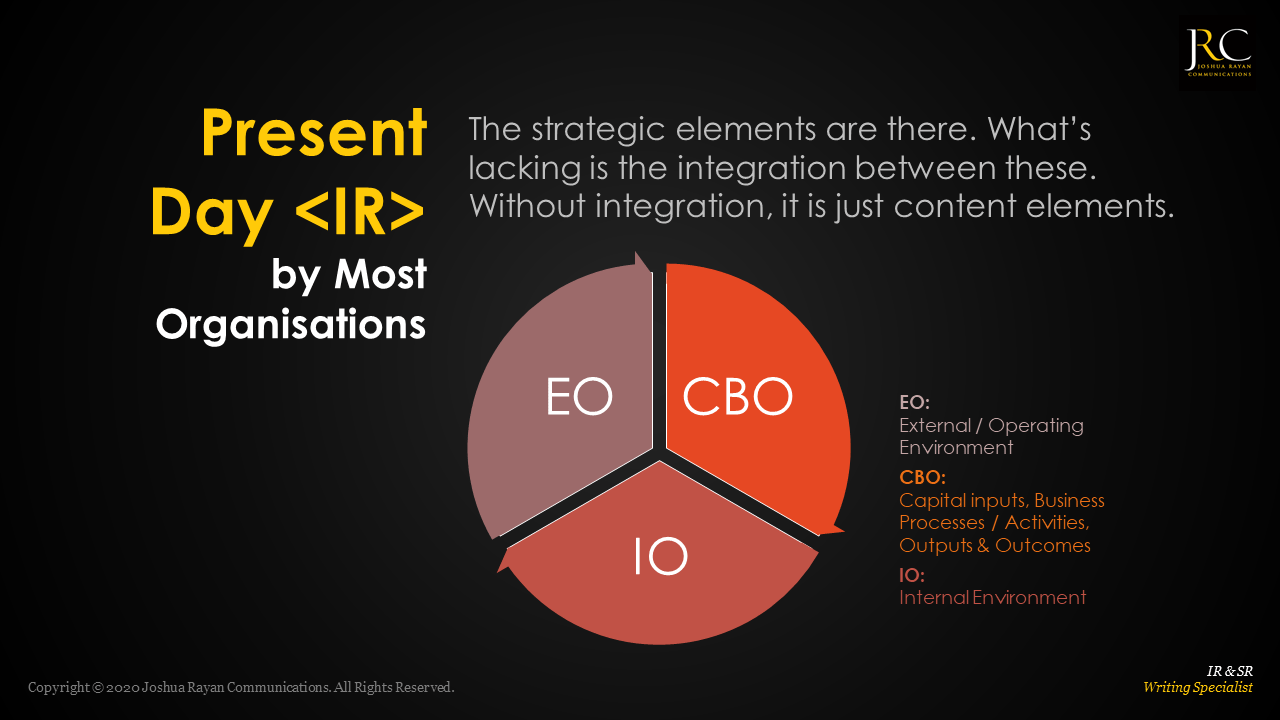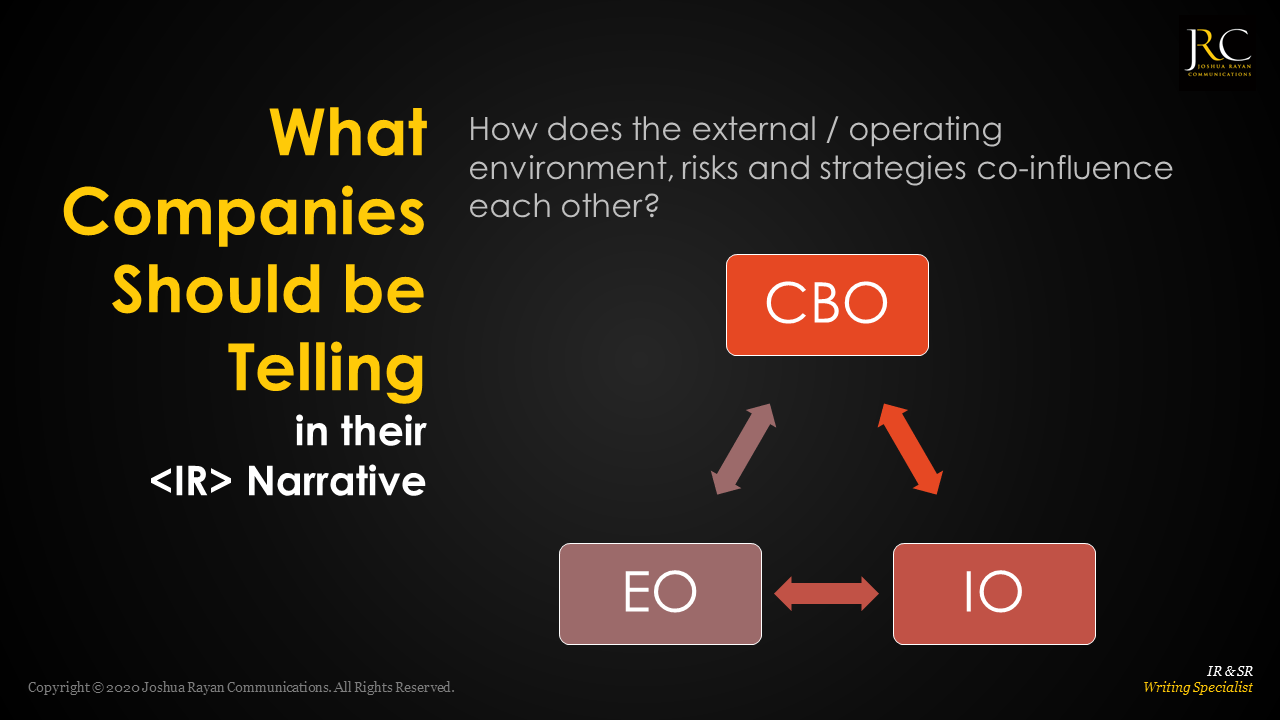As Integrated Reporting (“<IR>”) gains momentum across the world (and here in Malaysia), we continue to see some misunderstanding, or perhaps lack of understanding, on the difference between <IR> and integrated thinking.
Progressively, companies are adopting the prescribed guiding principles and content elements, but what we find lacking (even in third and subsequent year reporters) is how all of this information comes together to tell a connected and clear value creation narrative.
For example, comprehensive information is provided on the organisation’s risks, the business model and its external / operating and internal environment. But what’s often missing is how all these relate with, influence or impact each other.


Granted, the above is harder to do because it goes beyond providing information or strategic content, and towards showcasing integrated or strategic thinking. The former just requires information to be collected and produced within the report. The latter requires more in-depth and thorough thought.
But this is where the real value of <IR> comes to the fore. When the linkages between content elements are made, then readers will be able to see a true corporate story emerge. The robustness of the organisation and its business model can be truly ascertained and its ability to be sustainable over the short, medium and long-term horizons emerge.
This is the value of developing Integrated Thinking for the organisation.
This article was first published here.
Photo by Vivek Sharma on Unsplash.

 5.0
5.0 


















